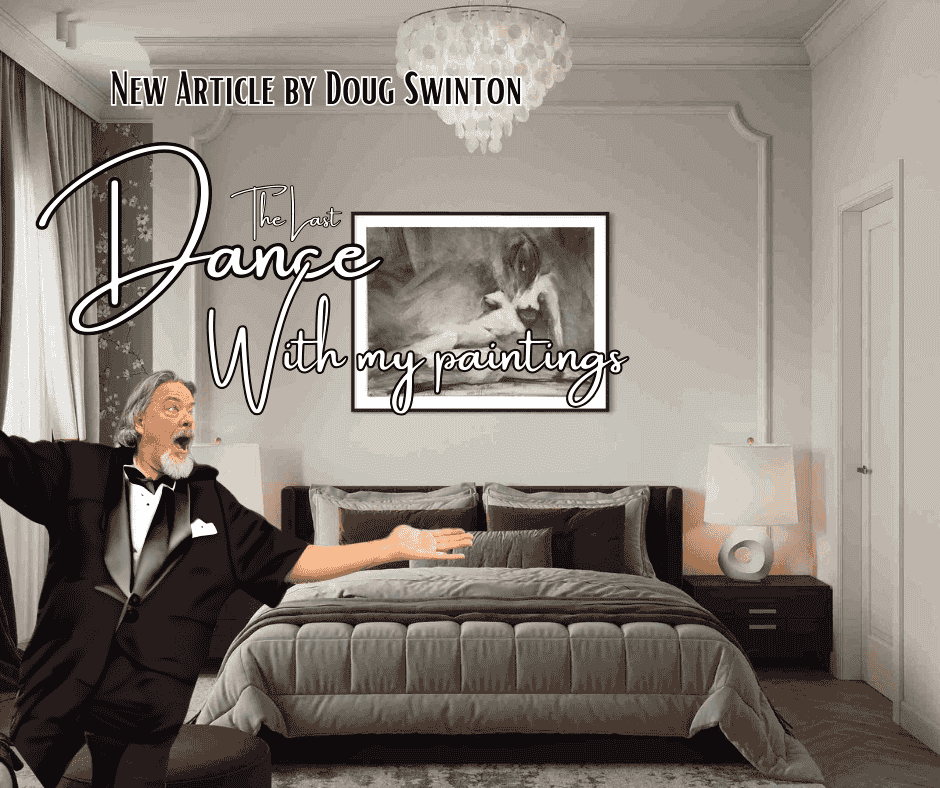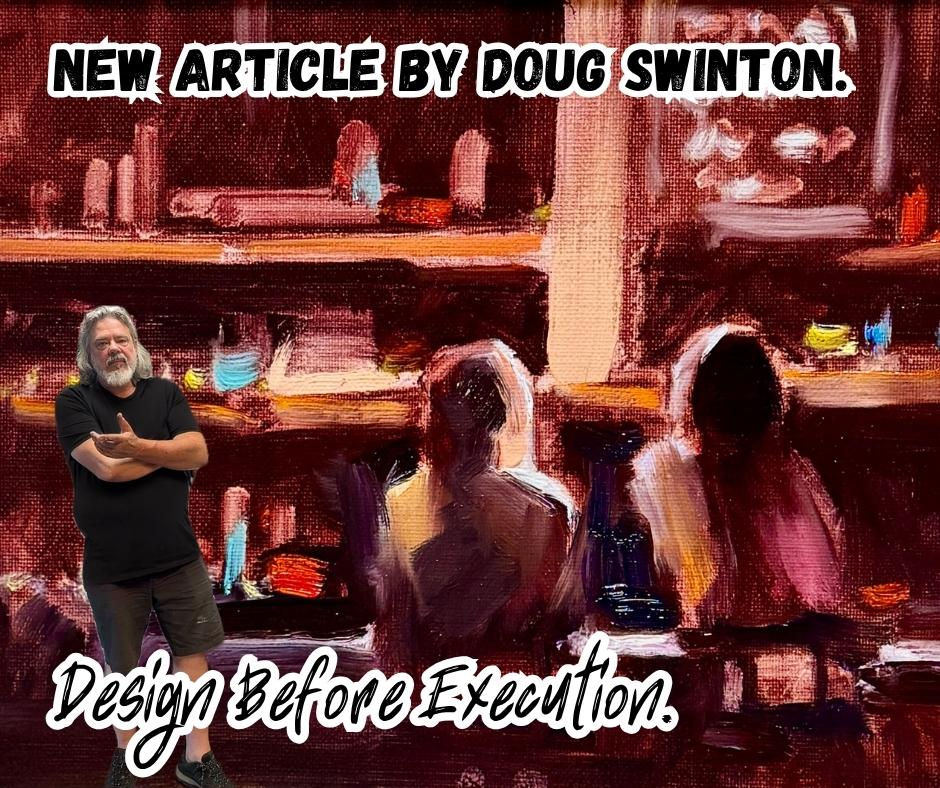Creative Vision
- Doug Swinton

- Feb 10, 2019
- 4 min read
Updated: Mar 21, 2021
by Erica Neumann

Artists have long been associated with having mystical abilities and a unique way of perceiving the world with a mysterious type of vision, a magical gift. It is an exciting ability that escapes and confuses many of us.
Tormented, we may explore our deepest imagination, stretching it until it nearly snaps in an effort to create something otherworldly and worthy of visionary status. For some reason our hunger for that mystical connection to our inner magic, no matter how hard we try, is still not satisfied.
We might at times feels like a fraud, not real artists, because we haven't been blessed with this gift. We muster up a huge amount of courage and continue to make art because we love it. Even though we might believe we are fakirs, we continue, hoping some day the gift will arrive.
The gift is here, it has been with us all along, right in front of our eyes. Every human being has had the ability to use Creative Vision since artists painted in caves 30,000 years ago. We have all used the ability at one time or another, unaware that it is the key to our mystical creative selves, that it is, in fact, the elusive gift.
Creative Vision is a side effect of a natural human trait called Pareidolia. We are most familiar with its effects when it causes us to see pictures in clouds. This trait evolved as a survival mechanism, as our brain will quickly scan and assess our environment for potential danger, causing us to see faces or animals triggered by textures.
Today the by-products of this Pareidolic Response include visions of Jesus in toast and sightings of the Man in the Moon. Artists throughout time have used the visions created by this response to make their art, but it was suppressed in Western Culture by the rise of religions that forbade visioning unless the visions supported their doctrines. A woman seeing Elvis in a potato chip may have been hung for witchcraft in Salem. Consequently, nowadays we usually dismiss these sorts of visions when they occur.
However, there are artists out there who overrode this cultural conditioning, and celebrated their visions by bravely sharing them with the public. Calgary's own lovely and talented Sandi Greene, enthralled the world with hauntingly beautiful photographs of her Pareidolic Response to local vegetation: visions of fairies and gnomes. The book is called Seeing Evangeline.
To use this ability ourselves, we should heed the words of the greatest artist and genius, Leonardo da Vinci:
Look at walls splashed with a number of stains, or stones of various mixed colours. If you have to invent some scene, you can see there resemblances to a number of landscapes, adorned with mountains, rivers, rocks, trees, great plains, valleys and hills, in various ways. Also you can see various battles, and lively postures of strange figures, expressions on faces, costumes and an infinite number of things, which you can reduce to good integrated form. This happens on such walls and varicoloured stones, (which act) like the sound of bells, in whose peeling you can find every name and word that you can imagine.
Do not despise my opinion, when I remind you that it should not be hard for you to stop sometimes and look into the stains of walls, or the ashes of a fire, or clouds, or mud or like places, in which, if you consider them well, you may find really marvellous ideas. The mind of the painter is stimulated to new discoveries, the composition of battles of animals and men, various compositions of landscapes and monstrous things, such as devils and similar things, which may bring you honour, because by indistinct things the mind is stimulated to new inventions.

There is a series of unusual pictures by da Vinci called the Deluge Series. They are believed to be representations of storms.
Da Vinci admitted in his quote that he uses Pareidolic Response to see scenes, animals, and to stimulate new inventions, although he didn't know it was called Pareidolia.
I would argue that the Deluge series are not pictures of storms at all, but were the surfaces he used to trigger his visions. They are cloud-like, and we all know how easy it is to see pictures in clouds.
To trigger your own visions, simply recreate his cloud like surface with charcoal or scribble with texture or create inkblots to study. Stare at the surface long enough and images will form, just like they do in the clouds. Outline your vision and explore the results using all of your creative skills.
By following in the footsteps of da Vinci at his request, you will overcome hundreds of years of suppression, secure in the knowledge that you are a for-real artist, reuniting with your deeper self while reclaiming your inherited gift: Creative Vision.
Author of this article is Erica Neumann.
Erica teaches at Swinton's on Mondays, Tuesdays and Wednesdays.
Erica Neumann graduated from the Ontario College of Fine Art program, and has been pursuing art professionaly ever since. Passionate about teaching the fundamentals in any art medium, she believes a good knowledge of the design elements and techniques particular to each medium will help anyone communicate their ideas successfully. Her work can be seen at the Gainsborough Galleries, Gallery 421, Hampton Gallery, and The Avens Gallery.








It makes you wonder about how our minds truly work, doesn't it? Maybe a quick Mental Age Test could even offer some fun insights into our unique ways of thinking and help us embrace our own creative vision!
دانلود رایگان نرمافزارهای جدید فقط در p30download.
p30download نکاتی درباره ارتقای امنیت سایبری ارائه میدهد.
در p30download نرمافزارهای ویرایش موسیقی هم موجود است.
Random Name Generator is a convenient online tool that instantly provides diverse name ideas for your needs. Whether you're creating novel characters, game roles like Drift Boss unblocked, or new projects, it generates unique options to keep your creativity flowing.